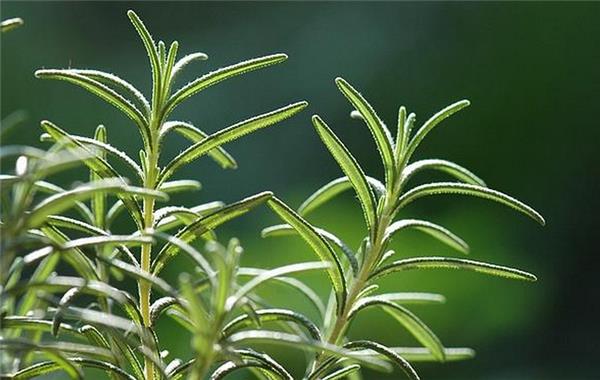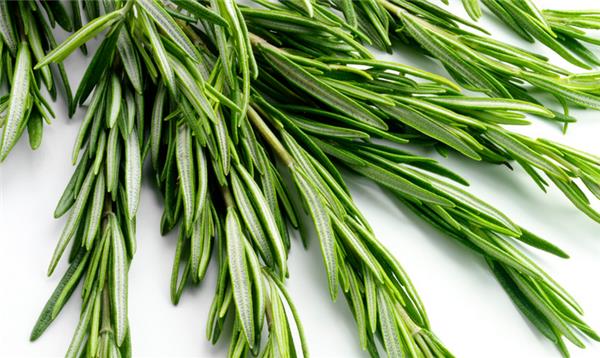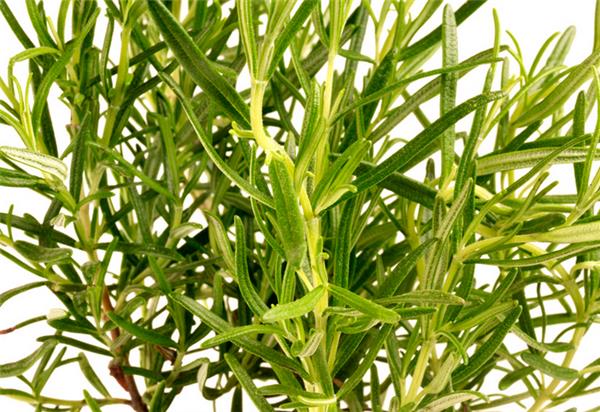[efficacy and function of Rosemary] what is the function of rosemary
Rosemary leaves with tea aroma, taste spicy, slightly bitter, often used in cooking, can also be used to make herbal tea. Evergreen shrubs, in ancient times, it was believed that rosemary could enhance memory. at present, it is recognized that the most antioxidant components in rosemary are sage acid, sage phenol, rosmarinol, ursolic acid, rosmarinic acid and so on. Rosemary is also often placed indoors to purify the air.

I. the efficacy and function of Rosemary
1. Rosemary flowers and seeds can relieve headache, help sleep and prevent hair loss, but also have a certain effect of sterilization and anti-pain; put a few leaves when cooking to remove the fishy smell; fresh grass can make tea, bathe, sweat and refreshing; flowers can be distilled to produce aromatic oil, the world's first perfume-Hungarian water is extracted with rosemary.
2. Eliminate flatulence, enhance memory, refresh and worry, relieve headache symptoms and improve hair loss (not suitable for pregnant women). Rosemary tea has a sobering fragrance that can enhance brain function, improve headache and increase memory. For students who need a lot of memory, they might as well drink more rosemary tea. In addition, it is also effective for colds, abdominal distension, obesity and so on.
3. Improve the impairment of language, vision and hearing, enhance attention, treat rheumatism, strengthen liver function, reduce blood sugar, contribute to the treatment of arteriosclerosis and restore the vitality of paralyzed limbs.
4. It has a strong convergence effect, recuperates greasy and unclean skin, promotes blood circulation and stimulates hair regeneration.

Second, the culture of rosemary
Plant management
Evergreen perennial subshrub with a height of up to 150 cm without pruning and an exhibition of 60 cm to 80 cm. The leaves are narrow and long like pine needles, the edges are curled, grayish green leathery, needle-like when dried, and the flowers are blue, pink and white. There are many varieties of rosemary, which can be roughly divided into erect species and creeping species. Most of the economic cultivation is erect species, because the space needed for its growth is small and the harvest is more convenient.
Planting and cultivation
Seed propagation of Rosemary
Rosemary germinates slowly and the germination rate is poor when reproducing seeds. According to literature, if the germination temperature is between 20 ℃ and 24 ℃, the germination rate is less than 30%, and the germination time is as long as 3-4 weeks, but if it germinates 1 week before 20 ℃ to 24 ℃ and then 4. After 4 ℃ (40 ℉) temperature treatment for 4 weeks, the germination rate could be increased to 70%.
Rosemary cuttings
Therefore, unless a new variety is introduced to foreign countries, it is a fast and secure way to breed and transplant it in a shady place after about a month. Creeping species can use the branches lying across the soil to be cut first and then buried shallowly, and then cut off the mother plant about a month later, which is another rosemary, but the operation procedure is more troublesome.

Third, the consumption of rosemary
Rosemary and thyme are commonly used spices in western food, especially in steak, potatoes and baked products. There is a special sweet with pine wood smell and flavor, rich aroma, sweet with bitter taste.
Rosemary powder is usually used to add a small amount of flavor after cooking, mainly for mutton, seafood, chicken and duck. Add some when baking food bacon, the roasted meat will be particularly fragrant; when preparing salad dressing, a little can also be used to make vanilla salad oil sauce; dry rosemary powder is often used when cooking dishes (if the dish needs to be heated for a long time, use dry rosemary with strong aroma); soak the dried rosemary in grape vinegar and serve as a dip in long loaves of bread or garlic bread.
Rosemary leaves with tea aroma, taste spicy, slightly bitter. A small amount of dried or fresh leaves are used for food seasoning, especially for lambs, ducks, chickens, sausages, seafood, stuffing, stews, soups, potatoes, tomatoes, radishes, other vegetables and drinks. Because the smell is very strong, take it out before eating.

The above is the planting technology of rosemary for everyone. Rosemary owners have a powerful memory enhancement effect, which is a favorite of many candidates, but we also need to note that it is also a blindly Chinese herbal medicine, oh, it is poison, but it is not good to overuse it and cause poisoning.
Related
- Wuhan Hospital Iron Tree Blooming Result Was Instantly Frightened by the Gardener Master
- Which variety of camellia is the most fragrant and best? Which one do you like best?
- What is the small blue coat, the breeding methods and matters needing attention of the succulent plant
- Dormancy time and maintenance management of succulent plants during dormancy
- Minas succulent how to raise, Minas succulent plant pictures
- What are the varieties of winter succulent plants
- How to raise succulent plants in twelve rolls? let's take a look at some experience of breeding twelve rolls.
- Attention should be paid to water control for succulent plants during dormant period (winter and summer)
- Watering experience of twelve rolls of succulent plants
- Techniques for fertilizing succulent plants. An article will let you know how to fertilize succulent plants.



